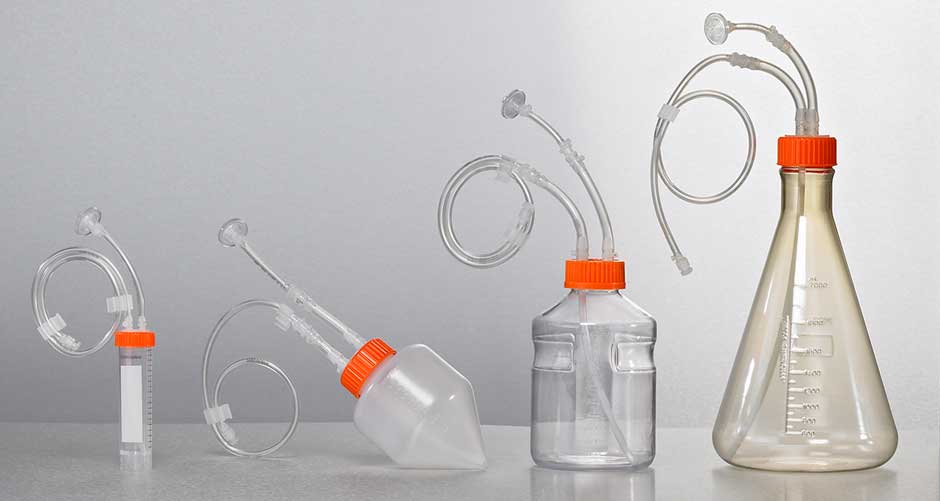
Closed and Aseptic Processes for Cell Therapy Manufacturing
 This article is one in a series that was published in the eBook
This article is one in a series that was published in the eBook“Cell Therapy Production”.
You can download all the articles in the series, by downloading the eBook.
Over the past four years, the landscape of medical treatments has expanded beyond small compounds to include therapies composed of or derived from human cells. With the success of cellular therapies for blood cancers, the cell therapy market has expanded rapidly, with the potential to provide life-changing therapies for more widespread indications. Cell therapy manufacturers must now meet the unique challenge of producing bio- logically complex therapies in a robust yet cost-effective manner, all while preventing potential contamination by other biological agents. Although the development of these therapies for small patient populations happens at research laboratory scale using manual, open processes, the demands of the market require novel manufacturing processes that are consistent, robust, and scalable. Central to such processes are the use of closed-system and single-use technologies.
In traditional cell-based production systems, open process steps are common and can be compatible in a ”one-product, one-facility” format. However, autologous, patient-specific cell therapies require numerous small, individualized batches that must be protected from external microbial contamination, as well as cross-contamination from other patients. Implementation of closed systems allows parallel manufacturing of patient-specific therapies while enabling manufacturers to work efficiently and reducing chances of contamination and production loss.
In this article, we identify key strategies to help researchers successfully transition their cell therapies from the lab to commercial production. We detail the advantages of implementing closed systems as well as some of the key hurdles when transitioning from traditional bioprocesses.
What is a Closed System?
By definition, a closed system is one in which the manufacture of a product is isolated from both the surrounding environment and operators1. If gases or other reagents need to be added to the closed system, they must be pre-sterilized using validated terminal or filter sterilization methods and the addition must be done in a way that does not expose the product to an uncontrolled environment.
A truly closed system with no environmental exposure eliminates the risk of contaminants, but the nature of certain process steps in cell therapy production may not currently be achievable in a closed system manner. As such, a “functionally closed system” allows users to perform unit operations in a realistic and logical but safe
manner. In a functionally closed system, any open events, such as media exchange, are done in a controlled space such as a biological safety cabinet, and materials are handled in a manner to avoid contamination from the environment, operators, or other reagents.
Closed Systems for Cell Therapy
In the paradigm of cell therapies where “the process is the product”, an efficient process is also a safe one. Consistent production schemes avoid batch failure and prevent costly investigations as well as recertification of the working space and extensive environmental testing. The implementation of closed systems can help developers achieve efficiency, and there are many technologies available to create a system compatible with a cell therapy process.
Why is it important?
A closed system, by design, provides physical barriers to protect the operator when working with infectious agents and conversely, to protect the work from the risk of microbial contamination or cross-contamination from other patient samples. Particularly for large-scale manufacturing, closed systems mitigate the risk and cost associated with the failure or loss of batches as a result of contamination but convey the additional benefit of allowing flexibility in the manufacturing space. Enclosing a process eliminates the outside environment, which lessens the need for mechanisms that control that environment, such as dedicated clean rooms and biological safety cabinets (BSCs). Removing the requirement of cleanrooms permits a reduced facility footprint and better utilization of space, which all result in cost savings.
Closed system technologies can also be incorporated with automation platforms, that not only improve product consistency by reducing operator variability, but also improve manufacturing efficiency and can reduce the vein-to-vein time critical in cell therapies.
How to Achieve a Closed System?
The implementation of closed systems provides common benefits in process efficiency and safety, but there is no ”one-size-fits-all” in the design of a closed system process; a successful process will take into consideration the diversity of cellular products as well as facility layouts and capabilities; as such, processes are highly customized and will require development. The design of any closed system starts with a detailed analysis of the current process to identify key unit operations that are suitable for closure. For example, if there is a step in the manufacturing process that requires introducing materials to the product, sterile tube welding or aseptic connectors can be used to replace spike port needles or open pouring in a BSC.
Another consideration in closed system design is the balance between risk and cost. Within a process, certain steps may bear lower contamination risk than others, or mechanisms to close that step may not yet be practical, either due to budgetary or facility constraints. While the ultimate goal is to have a fully integrated and complete closed system, designing such a process can be time consuming and financially costly. Therefore, an assessment can determine the risk level for unit operations where, if the contamination risk is low, closing that specific process step may not be necessary. As such, system closure can be achieved in a stepwise manner that prioritizes high-risk unit operations.

Once system closure has been designed and built out, it is necessary to validate it to ensure both its readiness and ability to maintain an aseptic environment. There are many resources available to help validate a closed system, but it can be valuable to leverage the expertise of your vendor(s). There are three criteria that define the readiness of a closed system: bioburden level, cleanliness level, and degree of environmental segregation or integrity2. Satisfying these criteria can be done with direct and indirect measures. For example, a direct way to test the integrity of the closed system is to undergo bioburden testing, which is accomplished by running bacterial growth media like TSB (tryptic soy broth) through the closed system and then culturing the media to detect any microbial growth. Indirect measures such as verification of sanitization records (correct time, temperature and concentration) also help ensure the integrity of a closed system2. Additionally, vendors of closed system components have quality systems in place consisting of appropriate validation studies and compliance documentation that can provide further evidence that the systems and materials utilized are fit for use.
A final piece in the implementation of a closed system is the personnel within a facility. Adequate staff training in the transition to closed system operating technologies should ensure that operators are comfortable with the new equipment and procedures.
When to Consider a Closed System?
Within the life cycle of a cell therapy product, successes in research and development become discussions of process development, and concerns shift to scale-up or possible outsourcing to a contract manufacturer. This transition presents an opportunity to initiate closed system design and is a common point for Corning team members to interact with both developers and their chosen manufacturing partners. The natural consideration of scale in a process development discussion is also a key aspect of closed system design. Your chosen components and operations should be scalable across the phases of manufacturing, and flexible enough to allow a process to run in diverse types of manufacturing spaces.
Summary
As demand for cell therapy products increases, viable cell therapy manufacturing processes must be scalable, consistent, and cost-effective. Implementation of a closed system in cell therapy manufacturing requires an initial investment but provides both short and long-term benefits. From batch to batch, closed systems lead to more robust and consistent manufacturing that helps manufacturers avoid the significant costs incurred by batch failures. In a larger context, closed systems enable manufacturers to work in more flexible environments that reduce capital and operational costs. Ultimately, closed system processes in cell therapy manufacturing provide a means for improving patient access to life-changing therapies.
Footnotes
-
1. Johnson J, Probst S, Palberg T, Gil P, Kennedy M, Rogalewicz J, Green K, Chalk S. Challenging the Cleanroom Paradigm for Biopharmaceutical Manufacturing of Bulk Drug Substances. BioPharm International. Aug. 01, 2011.
-
2. Estape D, Walker AL, Orichowskyj ST, Vega H, J. Pratt DJ. Proof of Closure: Life Cycle of Closed Systems. Pharmaceutical Engineering. Special Reports September/October 2017.